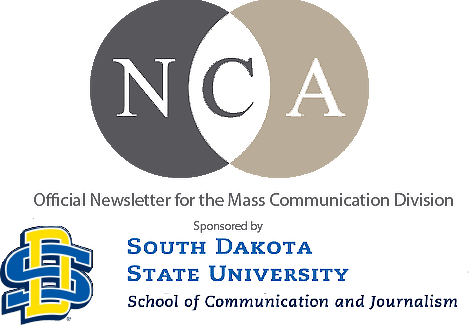
Volume: 28 Number: 2
Published three times annually by the Mass Communication Division of NCA.
Publications/Web Editor – Rocky Dailey, South Dakota State University
Welcome from the Chair – Editor’s Note – Announcements – Gatekeeper Scholar Chat – Division Officers – Gatekeeper Archives
“We’re kinda scared.” My graduate students told me this as we prepared to fly to Greece this summer to complete the externship requirement attached to their degree. When I asked for a reason, they explained they didn’t know what to expect from the people of Greece. We were slated to teach a media literacy course to Greek adolescents, and my students seemed leery of the future interactions they would share with the European teens. Most of them had never left the United States or North America, and their fears stemmed from the unknown. What similarities, if any, would the two groups share? What types of judgment would each side make? How would the entities communicate effectively?
Toward the end of the externship, my students (unsurprisingly) told me the experience had been life changing. They had expected a compelling adventure, but their expectations didn’t tell the full story. At a fundamental level, their fears were abated when they realized the differences that characterize humanity look the same in Thessaloniki as they do in Moraga, California. They loved the distinctive language, cuisine, and style, yet they also respected the diverse values and modes of expression used by their new young friends. At the same time, the groups shared a love of sport, movies, and humor. This appreciation of the differences and realization of the similarities was a direct result of basic interactions among diverse populations who were willing to dialogue.
In the spirit of keeping this type of conversation going, our division has planned a panel at this year’s convention dedicated to issues associated with inclusion, diversity, equity, and access. We have invited several experts to lead an audience-interactive discussion about topics like disparities in media representation and coverage, as well as accessibility and inclusion for individuals from marginalized communities and those living with disabilities. If we want to embrace and appreciate difference, then we need to understand how to include our differences in research.
Sometimes fear of the unknown leads to prejudice, whereas conversation reduces uncertainty and highlights the unique differences and similarities we share. In Greece, my students simply needed a number of interactions to reduce the fear of difference. At NCA, let’s take it a step further and talk about best practices for conducting research that employs equitable and inclusive methods. Let’s learn more about what we might not know, and engage in real conversations about the best ways to conduct IDEA-listic research.
I hope to see all of you there!
“How to Conduct More Inclusive Research”
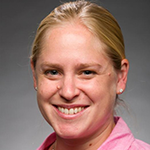
Chair
Veronica Hefner
St. Mary’s College – California
School of Liberal Arts – Communication
105J Sichel, Moraga, CA 94575
vh10@stmarys-ca.edu
It has been a few months since we launched the division website redesign and social media branding. I want to thank Patrick West, who is the Web & Digital Media Association for NCA, for his help in the process. I believe these changes have made the website easier to navigate on a variety of devices as well as making the process of editing and posting content much easier.
I hope you have found these changes beneficial as well. Please feel free to let me know if you have any suggestions or notice any issues. I also want to thank those of you who have flagged content on our Facebook page. I try to check that page regularly, however your help is greatly appreciated.
Sincerely,
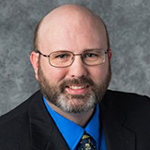
Publications & Web Editor
Rocky Dailey
South Dakota State University
School of Communication and Journalism
Yeager Hall 218, Box 2235
Brookings, SD 57007
rocky.dailey@sdstate.edu
Volunteer Registration for NCA’s 109th Annual Convention will open in mid-July. To be eligible, volunteers must be student members of NCA, and membership must be current through December 1, 2023. In exchange for one complete volunteer shift (4-6 hours), volunteers will receive complimentary convention registration, which includes access to all convention sessions and the NCA Graduate School Open House and Career Center; a chance to network with professionals in the field; and the opportunity to learn more about the Communication discipline.
Volunteers are required to complete their shift in full to receive complimentary registration, and they will not be permitted to leave early or arrive late due to other commitments. Please note that complimentary convention registration does not include NCA membership dues. It is recommended that potential volunteers who need to renew their membership do so at least three business days prior to registering as a volunteer to allow their membership to be processed. If you register as a volunteer, do NOT register separately for the convention, or pay the registration fee. View more information on the Volunteer Information webpage.
is looking to fill the following positions:
AppTV Student Media Adviser and Director. The position will advise, educate, and oversee students in all aspects of running AppTV, a non-commercial, student-run, university TV channel carried on multiple cable systems, serving both the campus and the community, as a full-time, in-person staff member in the Department of Communication within the College of Fine and Applied Arts.
Student Media Adviser and Director for WASU FM. The position will advise, educate, and oversee students in all aspects of running WASU FM, an FCC-licensed, non-commercial, student-run university radio station serving both the campus and the community as a full-time, in-person staff member in the Department of Communication within the College of Fine and Applied Arts.
Visiting Assistant Professor or Lecturer of Media Law & Digital Journalism. The successful candidate will teach media law and other courses in the Digital Journalism major. Their additional responsibilities will include participating in departmental service.
is looking for a Visiting Assistant Professor/Instructor of Journalism to teach Introductory News Writing, Introductory News Reporting, and other journalism courses as needed. Appointment begins August 21, 2023.
is looking to fill two faculty positions:
Salaried Adjunct Professor in Communication, quantitative methods and communication theory emphasis (full-time, non-tenure track) begins Fall 2023.
Salaried Adjunct Professor in Communication, media and production emphasis (full-time, non-tenure track) begins Fall 2023.
seeks applications for an Instructor of Journalism and Student Publication Advisor at the University of Southern Indiana. This is a renewable, 10-month appointment for an instructor in journalism and a student publication advisor for The Shield, USI’s editorially independent student news outlet. In 2021, The Shield was named the top Division 2 newspaper from the Indiana College Press Association; this award marks the sixth time in the past eight years The Shield has earned this award. The appointment will begin August 1, 2023.
is looking to fill two faculty positions:
Full-time, temporary faculty member to teach undergraduate courses in media literacy, mass media and society, media training, and media history. The position would also advise majors on course planning for upcoming semesters, and conduct service in support of the department.
Full-time, temporary faculty member in public relations and digital media writing/content creation will include undergraduate teaching duties in public relations, digital journalism, multimedia reporting, strategic communications, public relations for social advocacy, and core courses as needed. Candidates with expertise in one or more of the following areas are especially encouraged to apply: emerging/non-traditional journalistic formats, civic media, socially responsible public relations, and interdisciplinary multimedia applications.
is conducting a national search for the 12-month position of director of the School of Journalism & Media, to begin July 1, 2024. The director serves as a member of the college’s leadership team. The director is responsible for providing leadership and working to focus the teaching, research, creative activity and service missions of the school, representing the school to a wide range of campus and professional constituencies, and administering the school’s activities and budget. The salary is competitive and based on experience and academic credentials.
is looking to fill two faculty positions:
An assistant professor in sports promotion to join our award-winning program starting in August 2024. The faculty member will be responsible for teaching undergraduate and graduate courses in sports advertising and promotion; helping to develop course offerings, initiatives, and programs, focusing on sports media; as well as participating and leading collaborations with internal and external stakeholders in the regional sports media community. The successful candidate will also contribute to the development of our curriculum; conduct and publish research regularly; provide service to the college, university, and profession; and other assigned duties.
A non-tenured assistant professor of practice in journalism to teach a variety of mass communications courses and lead scholastic media organizations beginning August 16, 2024.
The successful candidate will teach journalism or related courses each semester, ranging from introductory-level to advanced courses, with a mix of conceptual and skills-based topics. Some graduate-level teaching is possible in our master’s program. In addition, this position will be responsible for partnership with the Nebraska High School Press Association, leading workshops and events with high school and middle school students interested in media.
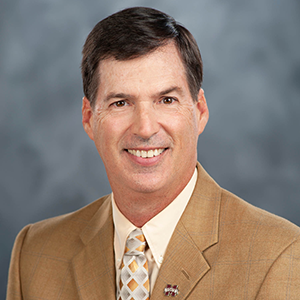
Dr. Terry Likes is is the Head of the Department of Communication and tenured full Professor at Mississippi State University. He has won over 100 awards and honors in his career, conducted 37 presentations at a variety of conferences and, in 2023, won his 10th regional Edward R. Murrow award for his reporting. In 2019, Likes received an “Award of Excellence” from the World Journalism Education Congress. In 2017, he won the Library of American Broadcasting Foundation’s Broadcast History Award in conjunction with the Broadcast Education Association. In 2013, the Southeast Journalism Conference named Likes, “Journalism Educator of the Year.”
In television, Likes has worked as a reporter, videographer and play-by-play announcer in Indiana, Kentucky and Tennessee. In radio, his reports have aired on the Tennessee Radio Network, Kentucky News Network and stations in Washington D.C., Baltimore, Tampa, St. Louis and Detroit.
I consulted many media and university colleagues when I considered leaving my full-time television reporting job for a university teaching position. The department head who wanted to hire me was correct in saying, “You will actually meet more people in the industry in your teaching role because you will be networking for your students.” In making the transition, I vowed to continue to tell meaningful stories.
It takes time to learn to become an excellent teacher while building a research/creative agenda along with juggling service responsibilities. Find a mentor, who can help guide you during the transition. Continue to learn by attending state, regional or national professional and academic conferences.
My aim then, as it is now, is to keep my reporting skills sharp, have current teaching materials for classes, and be able to show students their professors are still active in professional media endeavors.
Staying current with technology is one of the more difficult challenges for a professor. Technology advances quickly. It is difficult to be an expert on all hardware and software. Some departments have faculty who specialize, such as one in film, another faculty member teaches tv production, etc. Thus, one may find a niche area and build a strong teaching, research/creative portfolio in that direction.
My own work became even more radio focused as I transitioned from full-time faculty to administrative work fifteen years ago. I found I could produce audio content (all under my control) and fit that into my teaching/administrative schedule more easily than the many layers of tv reporting involving photography, graphics and more. I work to stay current by attending academic and professional conferences and bring that training, along with my professional experience to the classroom. There are numerous online workshops, webinars, and other resources available through a variety of organizations, such as NCA, BEA, AEJMC, RTDNA, SPJ, and the Poynter Institute, just to name a few.
Synergy is still a work in progress at many institutions. One barrier can be faculty emphases or curriculum still housed in specific silos. Another barrier beyond our control can be student or professional media facilities housed in various locations around campus.
On my own campus, we have a radio station, newspaper, and tv studio all in different locations but we still manage to have students working across platforms. We have faculty teaching courses across media platforms, too. We have regular media production faculty lunches where we share content and ideas to ensure our student media portfolios are industry ready. Our state media organization has its members devote time to campus workshops and offer a centralized state meeting each year where students get to network with the professionals and gain feedback on their dossiers.
For years I had students walk in the door saying they wanted to be a news anchor or the next Oprah Winfrey. Unless they know specifically what they want to do such as news, production, film, etc., a common theme today is they just want to work as a media professional, in some form, to create digital content. Young people are already active on social media, producing and posting videos. Our goal, as faculty, is to harness that energy, enthusiasm, and initiative. We can teach students the skills and knowledge to turn that passion into a career where employers will pay them to create media content.
The technology has changed drastically over the years. In some ways, lighter more portable equipment has made the job easier. In other ways, due to obligations to a variety of media platforms, today the job has become more difficult.
The advancement that has had the biggest effect, aside from technology, is the 24-hour news cycle. Producers and editors have little to no time to review content before it is disseminated. At the same time, with fewer entering the news business, the younger personnel who are interested in a media career are quickly working their way up into medium and larger markets, with less life experience/news judgement.
While technology changes, impactful storytelling does not. Whether it is a news story (on any platform) or a commercial, short film, documentary, ad campaign, etc., the essence is storytelling. We must teach students to have a foundation in writing, media law, ethics, history, the liberal arts, and be proficient in technology. We must use the tools effectively with proper audio, lighting, writing, to tell compelling stories. “60 Minutes” founder, Don Hewitt, always said, “Tell me a story.” In fact, it is the name of his book. Hardware and software change, storytelling remains constant.
It was not too long ago when television stations had hundreds of applicants for each on-air reporting job. Now, with young people not watching television news, low pay, and job burnout, we don’t have as many students wanting to be in news. Today, with journalism enrollment declining at many schools, we must meet student need and industry demand for qualified digital media content producers while educating students on the plethora of jobs available in the media industry.
I recently produced a short audio documentary related to this topic, ‘Newsroom Need: How Demand Now Far Outweighs Supply for Hiring Young Tv Journalists.’
We must provide future digital content producers with the skills to shoot video, write, report, interview, produce, announce, and edit material across multiple media platforms. There is still a need for reporters, along with a great demand for producers and photographers, but there is also a need in sales, engineering/IT and more. Students with these skills may or may not work directly in a newsroom but will have the knowledge and ability to be nimble to work across a variety of media-related career paths.
We have been blessed that, for many years, because students were drawn to tv and radio, the popularity of a journalism/mass communication degree required little recruiting. Students are not flocking to many college programs strictly for journalism anymore. To address this demand to work to recruit students interested in the profession, we have a recruitment committee with targeted approaches to high schools and community colleges.
In addition, we have expanded our course offerings and student media opportunities beyond news into creative media production. Examples include partnering with a local media company that offers an annual songwriters’ competition. Our Music Video Production class creates the music video for the winning artist. Another class, Creative Services Production, works with actual clients on promotional or marketing material. Our student PR agency, Prism (Public Relations Integrated Student Media) offers similar opportunities for PR students working with clients. We have two new sports production classes. Sports Video Production partners with our SEC Network facilities on campus to provide hands-on opportunities. Studio Sports Production is a course designed to offer a live thirty-minute sports program as a counterpart to our existing live thirty-minute television newscast. All these courses are designed to provide our students a wider array of opportunities to learn about the many career paths the media industry has to offer.
I have enjoyed covering a wide array of stories during my years in academia. Most feature an examination of the news industry from, “Fake news blues,” to “Truth, tabloids and trust: Declining confidence in the news media,” and “Cameras, cops and concerns: The impact of media coverage on police shootings involving minorities.” Some stories intersect sports and news such as, “Headache to Heartache: the call to action to reduce the estimated four million sports concussions each year.” Other stories have been on the lighter side including “The popular culture image of the journalist” to “Music and War: Lyrics, Love and Loss.”
In my full-time tv and radio reporting career, I had to produce two packages a day on two different topics. This frantic pace led to quick-turn daily stories with little time to produce something of depth. By moving into an academic nine-month teaching position, I could use the non-teaching time to devote to the type of long-form stories noted above. Being on tenure track, “Creative Scholarship” was part of the language used under “Research” in the Promotion and Tenure guidelines. I aired my creative content on a media platform (having it selected by an editor/producer) and then entered that content in a juried competition, such as a state, regional, or national professional media organization.
A particularly impactful story was my thirty-minute audio documentary, “The Media coverage of 9-11.” For many Americans, 9-11 was an event of a generation, much like people remember Pearl Harbor, JFK’s assassination, or the moon landing. For 9-11, with journalists covering the attack and its aftermath, my goal was to look at the impact of the media coverage, an angle no one else was reporting.
Some of top stories of the late 1990’s and early 2000’s involved Bill Clinton’s exploits, the trial of O.J. Simpson, and the death of Princess Diana. Many criticized the media for overblown coverage of these stories. However, we didn’t hear that type of outcry immediately after 9-11. Many members of the media put themselves in harm’s way to help inform the public, including providing life-saving information. One former network correspondent put it best, “I hope that it has established a new kind of threshold for news, with an interest in international news that had essentially vanished, and a commitment to covering serious news seriously over time as opposed to trivial news in depth ad nauseam.”
I have been blessed that many of my programs have earned state, regional, national, and international recognition. This report won a BEA Best of Festival award and aired in Washington, DC., Tampa, St. Louis, Detroit, Savannah, and the Kentucky News Network.

Chair
Veronica Hefner
St. Mary’s College – California
School of Liberal Arts – Communication
105J Sichel, Moraga, CA 94575
vh10@stmarys-ca.edu
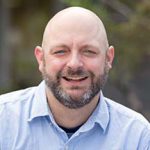
Vice-Chair
Matt Lapierre
University of Arizona
Department of Communication
1103 East University Blvd. Tucson, AZ 85721
mlapierre@arizona.edu
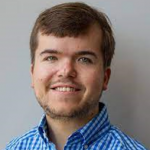
Vice Chair-Elect / Ad-Hoc Awards
Colin Kearney
Christopher Newport University
One Avenue of the Arts
Newport News, VA 23606
colin.kearney@cnu.edu
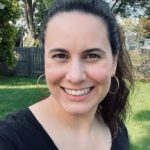
Past Chair
Valerie Kretz
St. Norbert College
Communication and Media Studies
100 Grant Street, Boyle Hall 352
De Pere, WI 54115
valerie.kretz@snc.edu
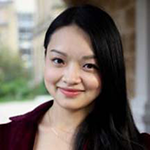
Secretary
Ellie Yang
Northwestern Missouri State University
800 University Drive
Maryville, MO 64468
eyang@nwmissouri.edu
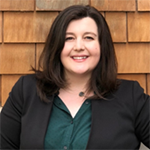
Secretary-Elect
Sofia Rhea
University of California, Davis
Department of Communication
Kerr Hall 154, Davis, CA 95616
vrhea@ucdavis.edu
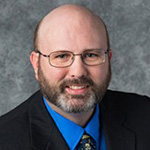
Publications & Web Editor
Rocky Dailey
South Dakota State University
School of Communication and Journalism
Yeager Hall 218, Box 2235
Brookings, SD 57007
rocky.dailey@sdstate.edu
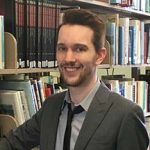
Graduate Student Rep.
John J. Brook
Northwestern University
School of Communication
710 N. Lakeshore Drive
Chicago, IL 60611
johnjbrooks@u.northwestern.edu
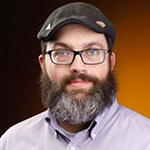
Ad-Hoc Appointment – Group Parliamentarian
Shane Tilton
Ohio Northern University
Department of Communication
Freed PAC 137
Ada, OH 45810
s-tilton@onu.edu
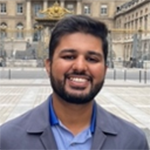
Graduate Student Rep. – Elect
Muhammad Rasul
University of California, Davis
Department of Communication
Kerr Hall 171, Davis, CA 95616
merasul@ucdavis.edu
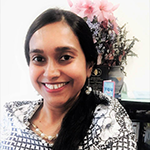
IDEA Representative
Sumana Chattopadhyay
Marquette University
Diederich Collge of Communication
Johnson Hall 404F
Milwaukee, WI 53233
sumana.chattopadhyay@marquette.edu
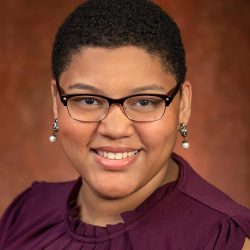
Committee Chair
Arienne Ferchaud
Florida State University
College of Communication & Information
4100 University Center, Building C
Talahassee, FL 32306
aferchaud@fsu.edu
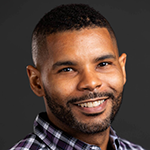
First Vice-Chair
David Stamps
Bentley University
175 Forest Street
Waltham, MA 02452
dstamps@bentley.edu
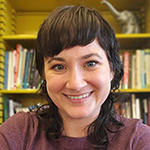
Second Vice-Chair
Hilary Gamble
Auburn University – Montgomery
Communication & Theatre
7430 East Drive
Montgomery, AL 36117
hgamable@aum.edu
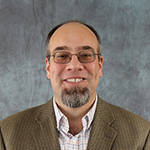
Second Vice-Chair – Elect
Laramie Taylor
University of California-Davis
Communication Department
7430 East Drive
396 Ker Hall, Davis, CA 95616
lartaylor@ucdavis.edu

Committee Chair
Benjamin K. Smith
California State University – East Bay
Department of Communications
3011 Meiklejohn Hall
Hayward, CA 94542
benjamin.smith@csueastbay.edu
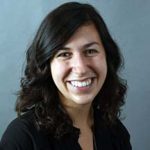
Vice Chair
Cassandra Alexopoulos
University of Massachusett- Boston
100 William T. Morrissey Blvd.
Boston, MA 02125
c.alexopoulos@umb.edu
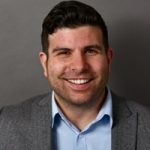
Vice Chair-Elect
Brandon Miller
Department of Communication
University of Massachusetts Boston
Wheatley Hall, Floor 6, Room 103
Boston, MA 02125
Brandon.Miller@umb.edu
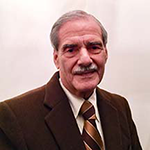
Stan Tickton
Norfolk State University
Mass Communication/Journalism
700 Park Ave., Unit 3249
Norfolk, Virginia 23504
sdtickton@hotmail.com
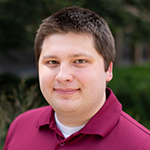
Joshua Baldwin
University of Georgia
Department of Advertising & Public Relations
Grady College of Journalism & Mass Communication
120 Hooper Street
Athens, GA 30602
joshua.baldwin@uga.edu